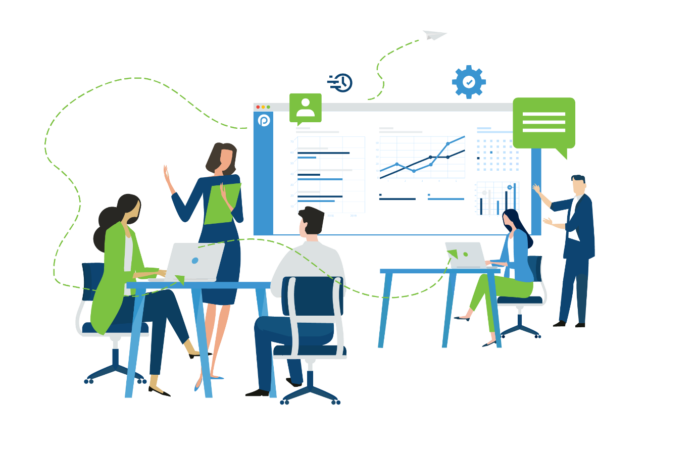Table of Contents
Workday Human Capital Management (HCM) is a robust cloud-based solution that empowers businesses to streamline their HR processes, optimize workforce management, and elevate the overall employee experience. However, implementing Workday HCM can be a complex endeavor, requiring meticulous planning, collaboration, and attention to detail.
In this step-by-step implementation guide, we will walk you through the key stages of successfully deploying Workday HCM in your organization.
Steps to Implement Workday Human Capital Management
Step 1: Assess Your HR Needs and Objectives
Before diving into the implementation process, it is crucial to assess your organization’s HR needs, pain points, and long-term objectives. Engage with HR stakeholders, department heads, and decision-makers to identify specific areas where Workday HCM can bring the most significant impact. Whether it’s improving talent acquisition, enhancing performance management, or optimizing payroll processes, a clear understanding of your goals will set the foundation for a successful implementation.
Step 2: Assemble a Competent Implementation Team
Workday HCM implementation is a collaborative effort that requires a dedicated team with diverse skills. Select key personnel from HR, IT, and other relevant departments to form a competent implementation team. The team should include project managers, functional experts, data analysts, and change management specialists. Define roles and responsibilities clearly to ensure seamless coordination throughout the process.
Step 3: Plan and Strategize
A well-thought-out implementation plan is crucial for success. Develop a detailed timeline with achievable milestones and realistic deadlines. Consider factors like data migration, system integration, testing, and training. Identify potential risks and create contingency plans to address any challenges that may arise during the implementation.
Step 4: Data Migration and Preparation
Accurate and clean data is the backbone of a successful Workday HCM implementation. Ensure that all existing employee data, including personal information, job details, payroll records, and performance data, are thoroughly reviewed and cleaned. Data migration tools provided by Workday Training can assist in this process. Conduct data mapping to align existing information with the corresponding fields in Workday HCM.
Step 5: System Configuration
Work closely with your implementation team and Workday consultants to configure the system according to your organization’s specific requirements. Customize workflows, security settings, and permissions to align with your HR processes. Leverage Workday’s best practices and industry standards during the configuration phase.
Step 6: Conduct Rigorous Testing
Thorough testing is essential to ensure that the Workday HCM system operates smoothly before going live. Conduct multiple rounds of testing, including functional testing, integration testing, and user acceptance testing (UAT). Engage end-users to participate in UAT to gain valuable feedback and address any usability concerns.
Step 7: Training and Change Management
Prepare your workforce for the upcoming changes by providing comprehensive training on Workday HCM’s features and functionalities. Offer role-based training to employees, managers, and HR personnel to ensure they can effectively navigate and leverage the system. Simultaneously, develop a change management strategy to promote user adoption and mitigate resistance to the new system.
Step 8: Go-Live and Post-Implementation Support
After all the preparation and testing, it’s time to go live with Workday HCM. Gradually transition from the old HR system to Workday to minimize disruption. Monitor the system closely during the initial days and be prepared to address any issues promptly. Offer post-implementation support to end-users and gather feedback to identify areas for further improvement.
Step 9: Continuous Improvement
Workday HCM is a dynamic system that evolves over time. Encourage your team to stay updated on the latest Workday releases, features, and enhancements. Continuously evaluate the system’s performance and gather user feedback to identify areas for improvement and optimization.
Conclusion
Implementing Workday Human Capital Management can be a transformative journey for your organization’s HR operations. By following this step-by-step guide and leveraging the support of a competent implementation team, you can ensure a smooth and successful deployment. Remember, the key to a successful implementation lies in meticulous planning, collaboration, and a commitment to maximizing the benefits of Workday HCM for your organization and its employees.


